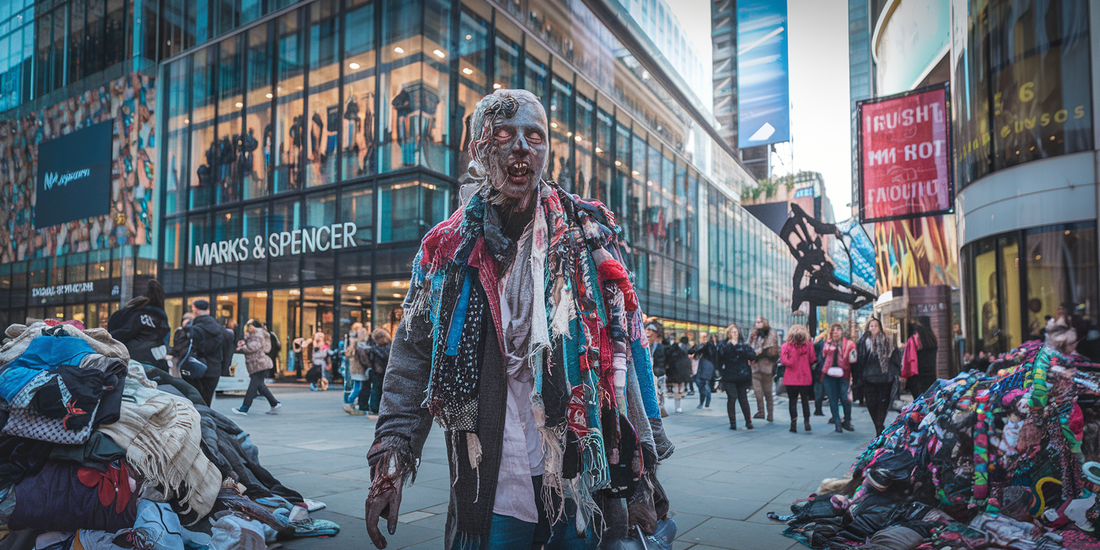
Zombies on Oxford Street? Discover the Shocking Truth Behind Fashion's Dirty Secret!
Share
Did you spot a clothing zombie roaming around the bustling Oxford Street in London?! That's not just any ordinary performance art—it’s a bold statement against the insane world of fashion overproduction! Concocted by the wildly creative Jeremy Hutchison, this textile terror is clamoring for attention right outside the iconic Marks & Spencer.
Fashion waste might not make your shopping list, but it’s drowning our planet. In support of The Or Foundation’s epic Speak Volumes campaign, this happening is shaking up your shopping vibes. Imagine snatching 20 tons of tossed clothing weekly from Ghana's Jamestown Beach! Shocker, right? Turns out, M&S is reigning supreme as the clothing castaway champ.
This zombie's fashion escapades aren't just a one-time stunt. They've stomped through the doors of mega fashion titans like adidas, Asos, and Primark, haunting anyone who dares to ignore the textile trails leading back to Ghana's shores. From the bustling Times Square to the glitz of New York Fashion Week, Hutchison and his sidekick, fair fashion warrior Venetia La Manna, are schooling the crowds—and fast fashion is their main target.
Liz Ricketts, co-founder of The Or Foundation, points out a glaring issue—Western countries dump millions of tons of textile trash in Ghana, Kenya, and even Chile's Atacama Desert. It’s far from a buried secret. Accra’s Kantamanto market tirelessly deals with a relentless ticker tape of 15 million secondhand garments each week. They can’t do it alone, and that's where production transparency swoops in as a savior.
But let's not stop there! Imagine disrupting the corporate cloak of mystery about garment production numbers, a number game only the industry's insiders know. Yet, this figure holds the key to flipping the fast fashion fiasco on its head.
So, make some noise and demand action! The Or Foundation, with backing from a 90-strong band of industry influencers, has thrown down the gauntlet to top fashion brands to reveal their production volumes. Transparency isn’t just a dream—it’s the path to a sustainable fashion future, one that’s rooted in transparency and tangible change.
